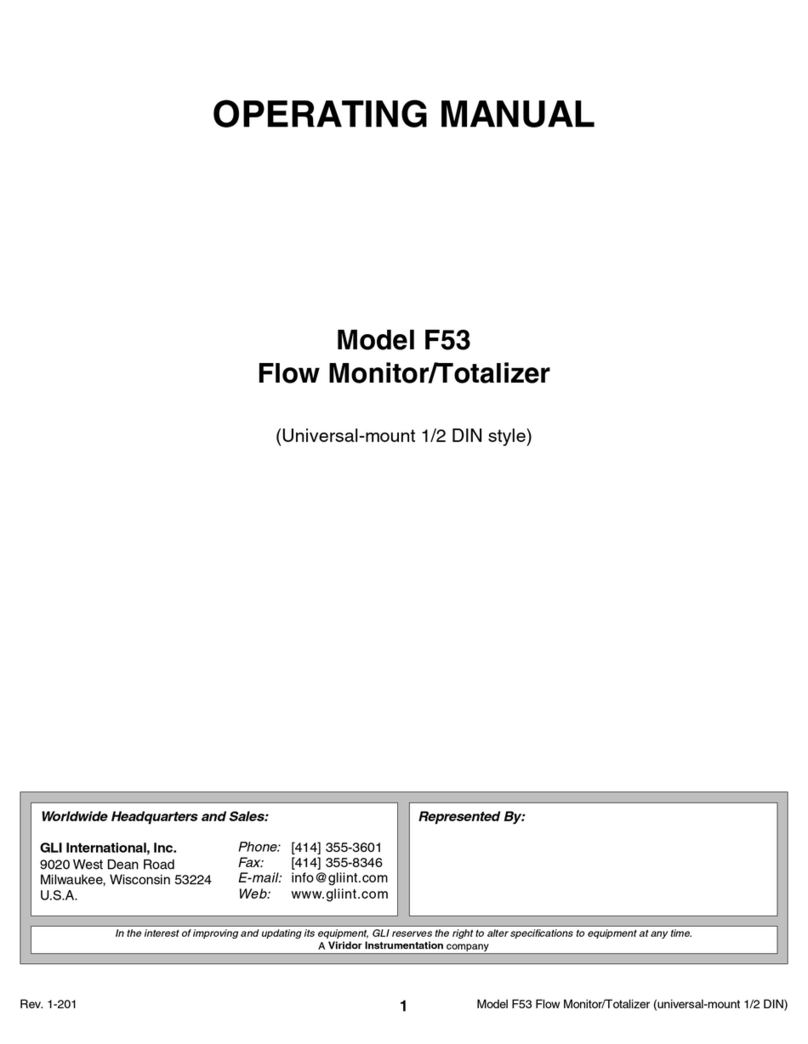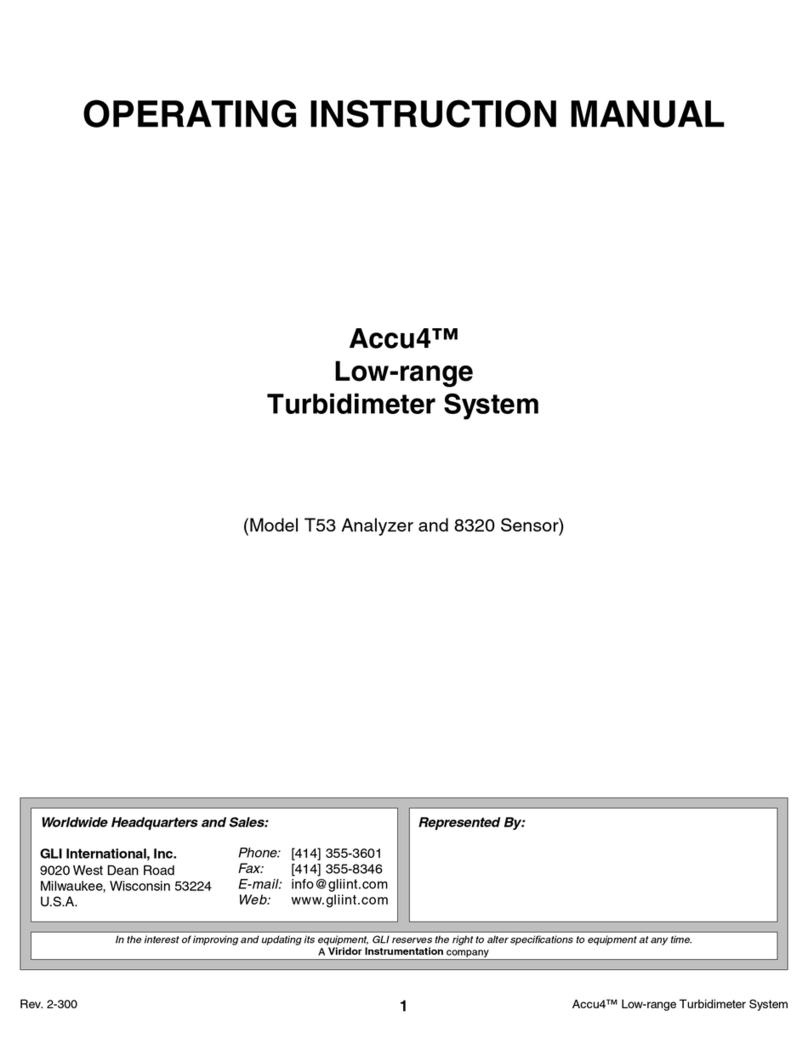
Model GLI-9143 Portable D.O. Meter 2 Rev. 0-401
Please read this instruction manual carefully
before using the instrument. This manual will
provide you with all the necessary information
for the correct use of the instrument, as well
as a precise idea of its versatility.
This meter is in compliance with European
Community (CE) directives EN 50081-1 and
EN 50082-1.
TABLE OF CONTENTS
PRELIMINARY EXAMINATION ................................. 2
GENERAL DESCRIPTION .....................................2-3
FUNCTIONAL DESCRIPTION -- PROBE .................. 3
FUNCTIONAL DESCRIPTION -- METER .................. 3
SPECIFICATIONS..................................................... 4
PROBE PREPARATION ........................................... 4
CALIBRATION .......................................................4-5
MEASUREMENT ................................................... 5-6
ALTITUDE COMPENSATION.................................... 6
SALINITY COMPENSATION..................................... 6
PROBE AND MEMBRANE MAINTENANCE...........6-7
BATTERY REPLACEMENT ...................................... 8
WARRANTY.............................................................. 8
PRELIMINARY EXAMINATION
Remove the instrument from the packing
material and examine it carefully to make
sure that no damage has occurred during
shipping. If there is any damage, notify the
transit carrier immediately.
Each meter is supplied complete with:
•GLI-76407/4 Dissolved Oxygen Probe
with 13 ft. (4 m) cable or GLI-76407/10
Dissolved Oxygen Probe with 33 ft. (10 m)
cable
•Spare membranes (two)
•Protective cap
•30 ml electrolyte solution
•Instruction Manual
•AA size Alkaline Batteries (four)
•Rugged Carrying Case
NOTE: Save all packing material until you
are sure that the instrument func-
tions correctly. All defective items
must be returned in their original
packaging together with the supplied
accessories.
GENERAL DESCRIPTION
The GLI-9143 is a water-resistant, micro-
processor-based, auto-calibration Dissolved
Oxygen meter with automatic temperature
compensation (ATC).
It has been developed for dissolved oxygen
and temperature measurement in water and
wastewater as well as other applications such
as fish farming.
Dissolved oxygen is indicated in hundredths
of parts per million (ppm = mg/L) or in % of
saturation.
The temperature range is indicated in centi-
grade from 0 to 50°C with 0.1°C resolution.
The ppm and the % saturation are both com-
pensated for changes in solubility of oxygen
in water and for permeability of the mem-
brane as well as the temperature effect.
Salinity compensation in water allows deter-
mination of mg/L of dissolved oxygen in salty
waters and the altitude compensation read-
justs for the altitude variance.
Four 1.5V AA alkaline batteries provide
power and make the instrument completely
portable. The meter is also designed to be
used with a battery charger or a 12VDC
power supply. A 12VDC input jack is incorpo-
rated into the housing.
A microprocessor ensures an accurate and
rapid calibration and measurement. The rug-
ged meter case is water-resistant for
maximum protection in the field as well as in
the laboratory.





























